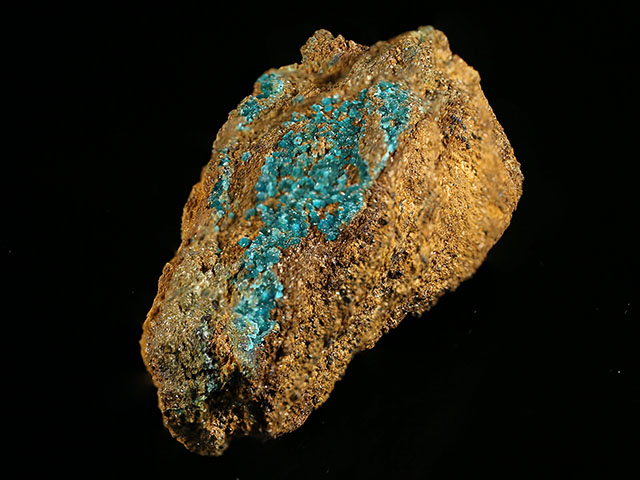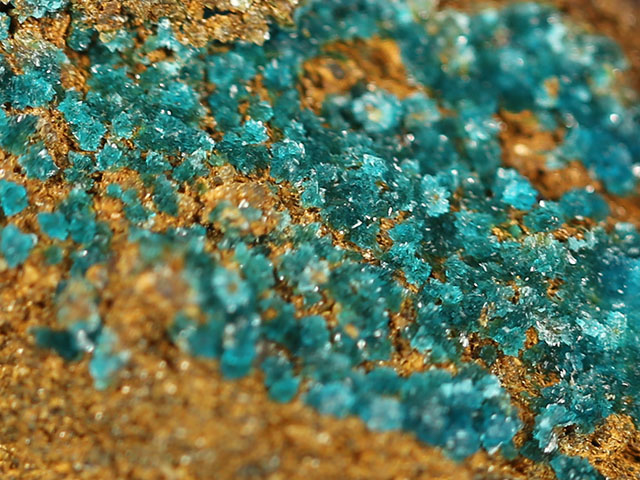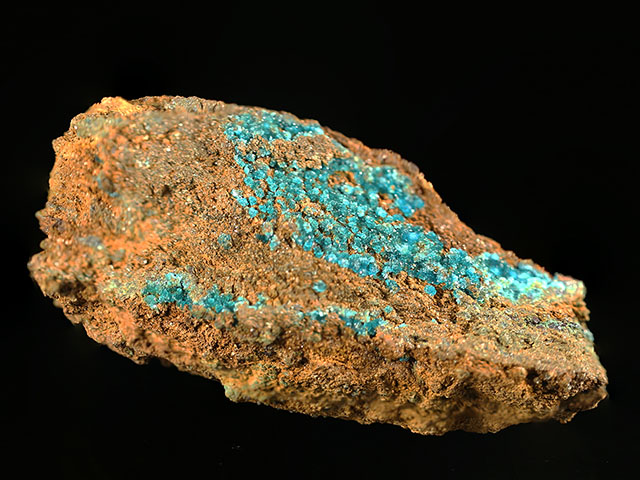Home > Phosphate Minerals – July 11 > MS1396 Turquoise crystals
Turquoise crystals - Sold
- Bishop mine
- Lynch Station
- Campbell County
- Virginia
- U.S.A.
- 7.0 by 3.0 by 3.0 cm – Miniature specimen (fits into a 5 cm cube)
Turquoise is a hydrous copper aluminum phosphate. Known since ancient times, turquoise derives its name from the French adjective for Turkish, since the original material from Persia came to Europe via Turkey (Pogue, 1915). Turquoise usually forms seams and nuggets admixed with clay. The typical admixture with clay, combined with minute grain size, led to much early confusion about turquoise chemistry (Pogue, 1915). The discovery of free-standing turquoise microcrystals in Virginia allowed resolution of its formula (Schaller, 1912). The first crystal structure determination of turquoise used Schaller's material (Cid-Dresdner, 1965). Modern definitions of turquoise and related species are given in Foord & Taggart (1988).
Crystallized occurrences are very few (~20) considering the (~500) localities (~500) for turquoise. Turquoise crystals from Virginia have a revered status in American mineral cabinets, being the first recognized crystals of an ancient Old World mineral. This specimen was collected in September 1955. The matrix is brown iron-stained schist, with a coverage of turquoise crystals 4 by 1.4 cm.



